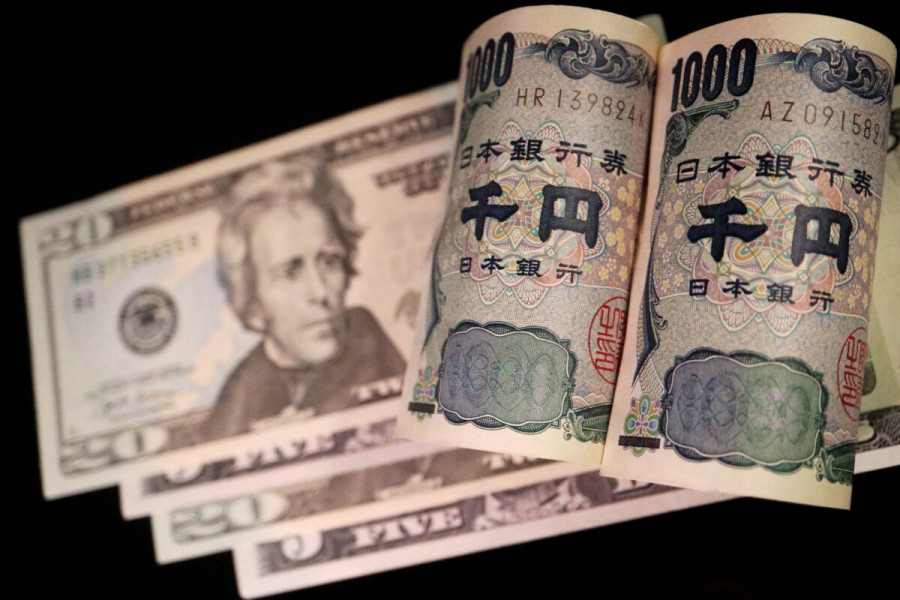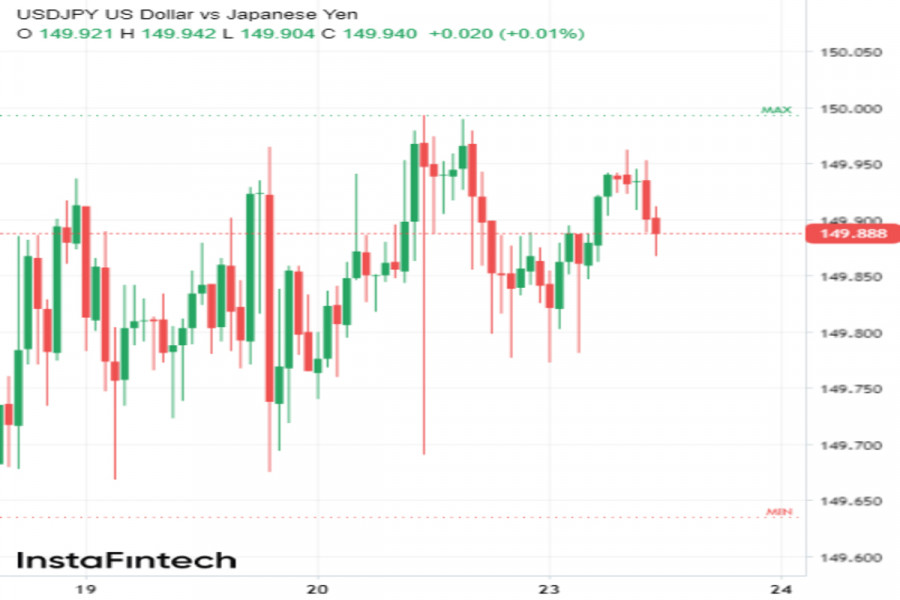At the start of the new trading week, traders focused on the level of 150 on the USD/JPY chart. Currently, the pair has strong reasons to climb above this level. However, fears of an intervention into the Japanese market hold it back from taking risky moves and keep it trading below the potential intervention zone. Let's examine how long this circular movement of the asset will continue and what it might lead to.
The strong dollar and fragile yen
Last week, the US currency gained support from a sharp jump in the yields of 10-year US Treasury bonds. They rose above 5% after mixed remarks from the Federal Reserve Chair, Jerome Powell.
Notably, last Thursday, the head of the US Central Bank stated that the regulator no longer planned to increase interest rates. However, everything will depend on the expected data. He emphasized that signs of economic growth and a stable job market might force the Fed to tighten financial conditions further.
Naturally, the prospect of a further rate hike caught the attention of the US dollar bulls. Demand for the USD also rose amid the increased likelihood of keeping rates high for an extended period. On Friday, several US officials confirmed their intention to maintain interest rates within their current range for a relatively long time. In particular, Federal Reserve Bank of Atlanta President Raphael Bostic speculated that the Fed might not reduce its rate until mid-2024.
As a result, Powell's hint at another tightening round, followed by hawkish comments from FOMC members, boosted the US dollar against the yen to the 150 level at the end of last week.
The decline in the Japanese currency was also influenced by a weak report on consumer price growth in Japan for September and dovish remarks from BOJ Chairman Kazuo Ueda. Statistics released on Friday showed a slowdown in Japan's core annual inflation from 3.1% to 2.8%. This reinforced the market's view that the regulator would not change its ultra-loose monetary policy soon. On the same day, the BOJ chief confirmed this theory. Ueda stated that the central bank planned to maintain its current monetary stance until its main target of stable 2% inflation was achieved.
This comment exerted significant pressure on the yen, causing the USD/JPY pair to spike sharply to 150.165. However, the major failed to sustain this peak. The asset quickly retreated to 147.3 due to concerns about Japanese intervention.
Curiously, on October 3rd, we saw a similar scenario with the dollar/yen pair. Back then, the quote surged to 150.16 and bounced back just as swiftly to 147.43, sparking rumors of an intervention by Tokyo.
The Japanese government has not taken responsibility for the sharp recovery of the yen, neither at the start of October nor now.
Most analysts believe that there was no intervention last Friday. They explained the increased volatility of the JPY by the growth in market concerns.
A strategist at Standard Chartered Bank said that the sudden rise in the yen was likely triggered by automatic transactions, particularly by executed stop-losses. Traders feared intervention when the rate reached 150 and were trying to minimize their risks.
The fact that the Bank of Japan ignored crossing the so-called "red line" has encouraged currency speculators. On Monday morning, USD/JPY tested the 150 mark again.
Analyst Yukio Ishizuki at Daiwa Securities noted that the dollar/yen pair surpassed the 150 mark in just a few hours in a low liquidity environment. This suggests that the movement was likely driven by speculators.
It is evident that carry traders continue to bet on the dollar's rise against the yen. This is due to the significant difference in interest rates between the US and Japan, causing a vast gap between the yields of 10-year treasuries and their Japanese counterparts.
Currently, the yield of American bonds exceeds the similar Japanese metric by almost six times. This strengthens the dollar and weakens the yen.
If it were not for the threat of intervention, the dollar would be trading even higher against the yen. I believe it is only a matter of time before this scenario plays out, analyst Adam Button said.
The expert thinks that if the Bank of Japan remains inactive in its upcoming meeting at the end of October, the yen could plummet against the greenback.
Economists at Commerzbank stated that the period for the Bank of Japan to initiate a change in its monetary policy is slowly ending. Core inflation is decreasing, and its main component seems to have peaked. If the Bank of Japan did not tighten its policy when inflation was rising, now is probably not the time to increase its growth outlook and end its dovish policy.
Experts predict that the USD/JPY pair will end the year around the 150 mark, maintained by the significant monetary divergence between the Federal Reserve and the BOJ.
If Japan's Ministry of Finance fails to draw a clear line by that time, efforts to intervene might be deemed futile by traders. This would further increase the devaluation pressure on the yen. In this scenario, the USD/JPY pair is likely to settle above 150.
What risks may USD/JPY face?
Most analysts are not optimistic about the future of the dollar/yen pair. Currently, many experts predict a moderate decline in the pair, but not because of intervention concerns. Some believe the asset might drop due to increasing speculation about monetary changes from the Bank of Japan.
A recent Bloomberg survey showed that over 80% of economists expect the BOJ to abandon its ultra-low interest rate policy in the first half of 2024. However, some experts believe the regulator might take hawkish steps this month.
Last Sunday, the Japanese newspaper Nikkei reported that Bank of Japan officials were considering another adjustment to the yield curve control program because of a spike in the yields of 10-year treasuries. Speculation about potential changes in the YCC has been ongoing since the central bank surprised markets in July by loosening control over long-term rates.
If the Bank of Japan decides to make such a move at its next meeting, it could negatively affect the USD/JPY pair and weaken its current positions.
Any change to the BOJ's ultra-loose monetary policy this month would significantly boost the yen's rate against the dollar. It would signal an upcoming interest rate hike in Japan. The US dollar might then drop against the JPY to 145.
Currency strategists at CIBS have a similar forecast for the USD/JPY pair. They estimate that the major currency pair will end this year at 145 and drop to 140 in the first quarter of the next year.

























